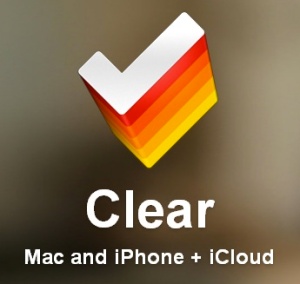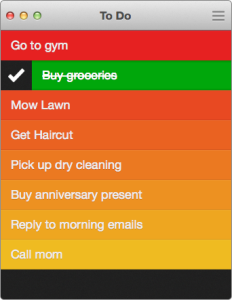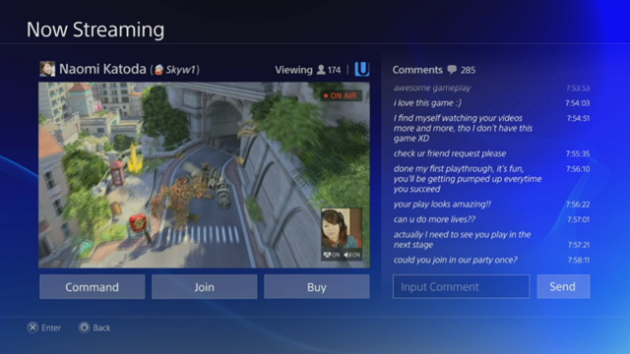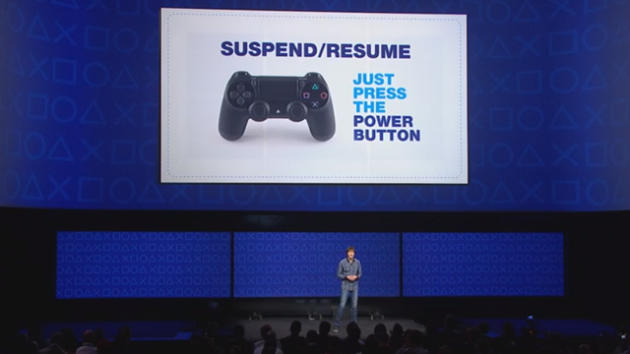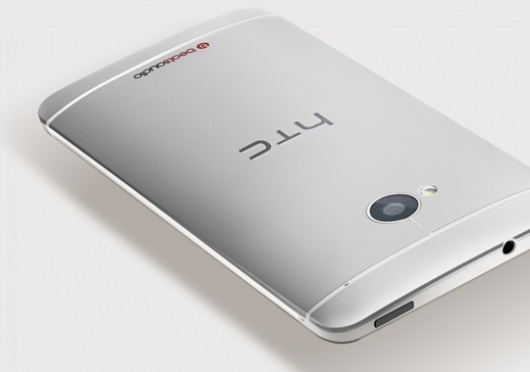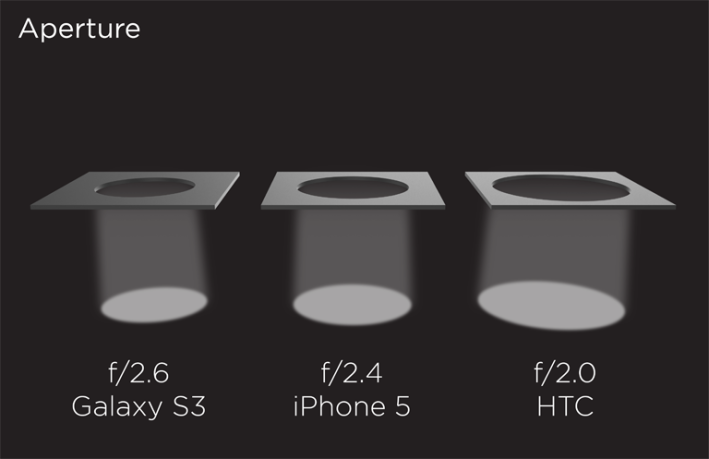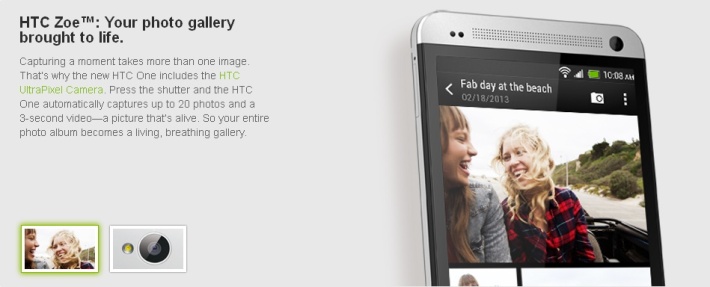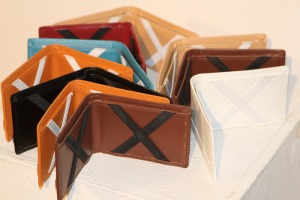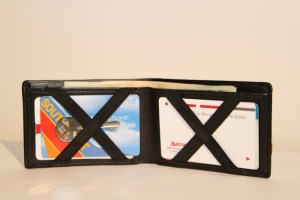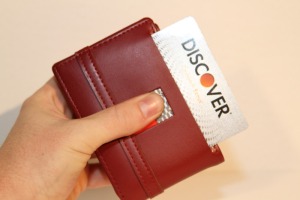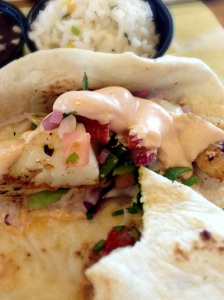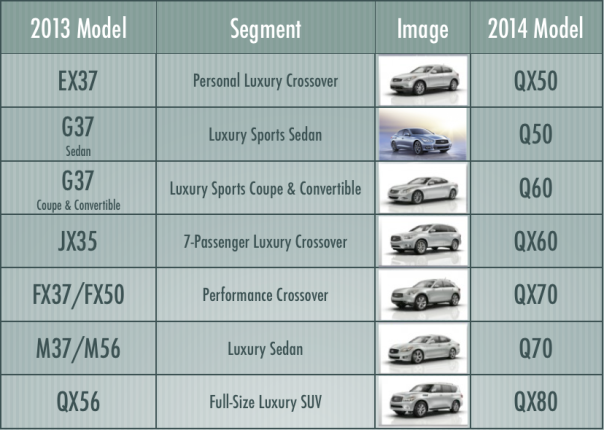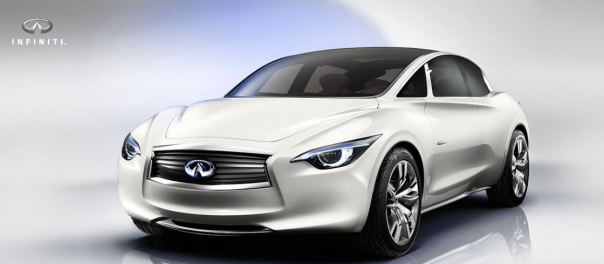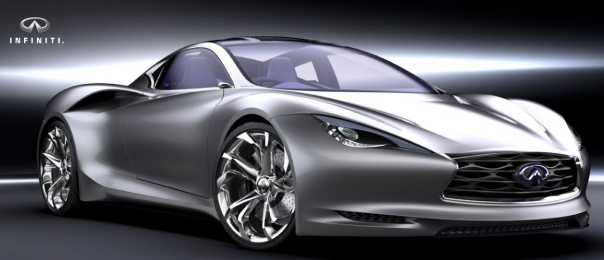Category Archives: Experience Design
UI, UX, Customer Experience, Design, Managing Expectations, etc.
Clear + Leap Motion: A Clear Leap Forward?
First Look: Sony PlayStation 4. Any Game Changers?
 Sony held a special conference last night to introduce the new PlayStation 4. I think the most notable thing about the conference is that they failed to actually introduce the console. Sony didn’t show the console hardware and they didn’t announce any pricing or availability. I’m not really sure they even confirmed the name or anything. After all, Sony’s webpage simply says “PlayStation: See the Future” and directs Twitter traffic to the #playstation2013 tag
Sony held a special conference last night to introduce the new PlayStation 4. I think the most notable thing about the conference is that they failed to actually introduce the console. Sony didn’t show the console hardware and they didn’t announce any pricing or availability. I’m not really sure they even confirmed the name or anything. After all, Sony’s webpage simply says “PlayStation: See the Future” and directs Twitter traffic to the #playstation2013 tag- Lot’s of studios working on great games.
- x86 chip, 8GB RAM, huge hard drive, etc.
- Camera.
- Social gaming network
- Can’t play your old Playstation games, streaming only
- Touchpad on the controller – bad location and what’s the point
- DualShock 4 controller finally gets some curves and comfort.
- Continue games on PS Vita portable console (if you have one)
- A “Share” button right on the controller
- I love the instant Suspend and Resume from a power key on the DualShock 4. That definitely reflects modern computing appliances like smartphones and tablets, but it is not a game-changer by itself.
HTC Ultrapixels vs. Megapixels: Where Experience Design and Marketing Clash
Another advantage touted by HTC is the ISP (Image Signal Processor) to fully accommodate real-time video and image processing. Since there are less pixels, it is easier to achieve the processing throughput to keep up with the signals coming in from the camera. This means the camera can capture full-size images in the video capture without compression or other lossy techniques that degrade the image.
Articulate Wallets: Another great product design accelerated by Kickstarter
We took all the great features of wallets and money clips and put them into one affordable, stylish,and sleek leather design.
- Elastic bands instead of leather pockets
- Special slide out pocket for most-used credit/debit card.
Taco Ocho: Experience Design Wins and Losses
I love tacos! I’m a Texan, so that shouldn’t be a shock to anyone. Foursquare has rewarded me for exploring the Mexican food category above all others. As such, I’m always on the lookout for a great taco place and pretty judgmental about my taco options. Today, I lunched at Taco Ocho in Richardson with Michael (blogs at MuCraft ) and finally tried the eighth taco flavor that I hadn’t tried before.
Taco Ocho is a locally-owned shop in a small commercial strip center near the office. I have been going there pretty regularly for about a year and a half since they opened in the late spring of 2011. It is definitely among my favorite taco shops and I have frequently run into friends there or encounter a nearly full dining room, so it seems pretty popular.
Approach and Navigation
Taco Ocho has a very tried-and-true structure to greet customers once arriving at the restaurant. There is an open corner location with windows across the front, allowing a peek inside and plenty of light once entered. For a first visit, I really want to see inside and know that I won’t be surprised or feel trapped once I’m inside the shop. They have a handrail to separate the line on the left as you come in the entrance, so it is very obvious where to enter the line. A large board menu is above the counter, making it fairly easy to start making some selections. There could be some better signage to help entice and direct first time visitors with a bit more sense of what the experience will be.
The left wall has a large mural of a Spanish mission with sunrays that provides a hint of the Latin cultural basis for the restaurant and also a bold and lively precedent to the experience.
Menu
Taco Ocho has divided their menu into 3 simple categories:
Tostadas – Vegetarian “salads” served on a flat, crispy corn tortilla base
Tacos – Flour or corn tortillas filled with meat and/or veggies
Tortas – Latin grilled sandwiches made with bollilo bread
Each category offers eight (or, ehm, ocho) pre-defined combinations. This is a pretty balanced number of options, allowing for some choice but not overwhelming even on the first visit. The drink options are pretty limited with a few bottled sodas, fountain drinks and tea. I was glad to discover crushed ice from the dispenser – always a bonus in my book.
Learning Curve
The simple approach and the limited menu makes a pretty shallow learning curve for Taco Ocho. You won’t struggle to avoid standing out as a newbie, even on the first visit. Plus, most of the choices are good, so feel free to experiment and try. They will even offer suggestions if you ask.
Unfortunately, there isn’t much depth to the menu or experience. I always get 2 tacos, and enjoy mixing among the choices. However, since there is very little room for customization or personalization, there doesn’t seem to be much depth to discover here on repeat visits. Today, I completed my sampling of tacos, so I have nothing left to explore there.
Immersion & Place
I think Ocho has an interesting place. The restaurant has mostly modern ‘industrial’ decor with metal chair, flat white tables, pendant lights, a red brick wall, and concrete floors. The food itself has deep latin and Mexican roots, but also has that same sense of modernism, with refried black beans, rice seasoned with cilantro and corn, and small light tortilla chips the standard sides for a taco plate. Overall, I think that Taco Ocho achieves it’s ‘mission’ in the interior design, providing a modern, trendy feel.
The decor has a couple of drawbacks that seriously diminishes the immersion of the experience. First, on multiple occasions, I have sat is a spot directly under the air conditioner vent and it is blowing a strong current across my food and me. I have even changed seats to avoid this during summer months. Second,they use pagers to let you know when the food is ready. This is a small place and I wish they would just bring food out so that I don’t have to interrupt and get back up to fetch food. Finally, with all of the hard surfaces and tight tables, the noise level is excruciating during most lunchtimes. It’s not a pleasant place to sit and enjoy a thoughtful conversation. Each time, I’m anxious to get up and go as soon as I finish eating. On the surface, this may seem to serve Ocho’s interests in freeing a table, but I would argue that I’m more likely to skip it over on a day that I’m not up for the noise and it costs them my business at times. Each time, I’m as happy to leave, hearing the door close and experience the relative quiet of a busy street, as I was to arrive.
As a professional in product design, I notice that this is a specific use case that they have neglected. They have done a great job on the food and visual decor, but the practical value of relaxed comfort while there has been neglected or overlooked by the owner. Maybe they didn’t consider that they are not just offering food, but for many, a social experience with their friends or family.
Predictability & Variety
Taco Ocho definitely leans more toward predictability than variety. I have tried all of their tacos and have liked all of the choices, but definitely have my favorites. Latin Love has shredded beef, refried beans, and fried plantains. I love the sweet and savory taste of this taco on corn tortilla and order it almost every time. It’s only flaw is that it almost always is runny and a bit messy (unless it’s too dry which is worse). Chicken Elote is smoked chipotle chicken with corn, cheese and cilantro. This one sounded mundane, but I really like the balance of spices in the chicken. Cabo Fish is beer-battered or grilled fish with jicama slaw and a chipotle cream sauce. Hard to beat a tasty fish taco like theirs.
The variety is harder to come by unless you are happy between the 3 options they have. I have only ordered tacos so far, and definitely want to try some of the others, but I wish that I could mix up some of the options to create some taco choices of my own. Or, failing open options, I wish that Ocho would offer special features from time to time to keep things fresh and interesting. It seems they are strong on the ‘taco’ and limited by the ‘ocho’.
They do have special Mexico City Street Tacos on ‘Taco Tuesday’, but I haven’t tried them yet, so I need to make an effort to aim for that some week. Variety is definitely a miss for us fans that have been coming since the opening.
The Payoff
Whenever I evaluate a product or service from an experience perspective, I always ask, “What is the Payoff?” For Taco Ocho, this one is pretty easy. They offer a unique and tasty taco with enough variety to appeal to many tastes. They have room to improve their overall experience design and menu, but it still rates highly with me.
Have you been to Taco Ocho? What do you think?
My First 30 Days Experience with a BMW
So, it’s now been a month since I bought my latest car. It’s a 2010 BMW 328i. I feel fortunate to find such a great used car that fit in my pre-decided budget. I was looking at a lot of cars and was getting serious about buying a used Nissan Maxima SV.
The BMW Choice
My BMW is the first one I ever drove. I had a couple of friends suggest that I should at least check into BMW before my final decision. I was honestly surprised that I could get a late model 3-series in my budget. I found a compatible BMW at the Infiniti dealer (my last car was Infiniti so I’m familiar with the dealer already). I went and made a test drive with my wife along for the ride. It only took a short drive for me to like it, a lot. The dealer had a Maxima SV fully-loaded also in their inventory, so I was able to compare side-by-side and drive-after-drive.
The Maxima offered a slightly bigger car, bigger engine, a panoramic sunroof, iPod integration, rear camera and navigation with a large display. The BMW had none of those amenities, but the driving experience won me over. I loved how it feels very connected to the road, with a perfect balance of dampening between true sports car feel and luxury car feel. The steering is much tighter and more responsive than my previous cars. The bucket driver’s seat is supportive and supremely comfortable with great alignment to the pedals and the wheel. Anyway, I loved the drive and bought the car the following day after sleeping on it (or trying to).
Expectations Met
After a month of ownership, my experience with the car has been exactly on point with my expectations. I enjoy driving it whether on my daily commute or the occasional highway stint. In fact, my enjoyment has only increased as I continue to adjust to it. There is a part of me that wishes I had the extra amenities the Nissan would have included, but the pleasure of driving more than makes up for it. Besides, I’ve never had those features so I don’t really miss them. And it does have some great amenities like keyless entry and start, heated seats, smart climate controls, sunroof, and more.
A Mind of Its Own?
I have wondered if the BMW is smart and helpful, or just a smart Alec. Like a lot of cars with keyfobs, the BMW sets seats and even mirrors for the driver. This has been a bit of a confusion for me, so I need to read up since the controls on the side of the seat are hard to study while seated. Still, I have found the mirrors still adjusting as I pull away and that can be disconcerting. Plus, it seems that often, I set them and they still revert to a preset immediately after. Another example came up today since it was a bit rainy at moments this morning. I set the wipers on the intermittent mode as I headed toward the school for drop-off. My daughter and I both noticed that the timing was very uneven between wipes. I’ve got to figure out if there is a sensor that is determining the delay or perhaps something is wrong with the wiper relay. Whatever the case, it was ranging from 3-7 seconds delay, and seemed rather random at that. I think my car is a bit overconfident and needs to get to know me a bit better before it starts making decisions for me.
What Were They Thinking?
There is one design decision that I really don’t get. The only button in the car to lock or unlock doors is right in the middle of the center console. There is not one near the door. If I approach the car while I have passengers, the front door will open for me, but the back doors remain locked. I have to get into the car before I can reach the unlock button on the console. A button on the door would be easier to access and much more logical. Maybe there is an explanation and they thought about something less obvious to me, but it feels like a miss in the experience design. I’ll probably get into the habit of pressing the unlock button on the keyfob when I have passengers, but it definitely detracts from the simplicity and value of the keyless entry solution.
How is the BMW Experience?
Overall, I’m quite satisfied with my choice of car to drive for the coming years. It looks great, feels comfortable, has some nice features, and most importantly is very fun to drive. I guess some might take issue with their brand message: “The Ultimate Driving Machine”. I would have to say that at least they picked the category that matters to me. It is at least my ultimately matched driving machine for now. A lot of products offer bells, whistles, and other enticements, but many times, the greatest satisfaction and customer experience comes from doing the one right and important thing really well. Sure, a lot of problems could ruin that experience, but as long as everything else is OK, I’ll gladly go along with it to get such a superior driving experience.
Have a great car experience? Tell me about it in the comments.
Infiniti’s Naming Pivot: The 2014 Infiniti Q50 and what it means for the brand
Amazon to hand out some serious coin
Amazon announced their new virtual currency, to be called Amazon Coins earlier today. Coins can be used to purchase apps, games and in-app items for Kindle Fire. They also pledge to give away “tens of millions” worth of the coins starting in May when the new service/product launches. See Introducing Amazon Coins.
I think it is smart for Amazon to provide another way to ease the purchase of content in the Kindle Fire ecosystem. Also, I imagine that they will give Coins away with purchases of Kindles and probably with lots of other goods, too. It will be interesting to see where Amazon ultimately goes with this, but here are some of my initial ideas.
Fire Halo Effect
I could see a small kick-back on purchases whether you have a Kindle or not. Soon enough, you’re going to want to have a Kindle so that you can cash in all of your earned Coins. Could be a serious draw for the ecosystem. I know that I spend a fair amount annually with Amazon. If they give me a small percent of credit toward virtual goods on their platform, it could make that seem more attractive.
Coins Aren’t Real Money
I also believe that they will make it easy to buy Amazon Coins or give them as gifts or in-app incentives. Once real money is translated to Coins, Amazon wins! You will spend it at Amazon on virtual goods giving Amazon an easy 30% commission. Also, you’re likely to have some residual coins drawing you back to add or earn some more. Finally, it seems much easier to spend virtual credits than real dollars and cents.
Kindle Everywhere
Could it also be a way to create more loyalty to their virtual goods over time. I wouldn’t be surprised to see Amazon Coins accepted for Kindle Books or AmazonMP3 to be read and played on other devices, like Android phones and tablets or Apple iDevices. Could be a great way to create lock-in for their virtual marketplace. This would build loyalty toward their marketplace and not just the Fire device portfolio. Amazon’s devices have been created to support their “Long Tail” marketplace, not the other way around.
Drop Some Coin for Anything
Another obvious extension of this would be to allow Coins as payment for all kinds of goods. Want something shipped to your house? Amazon Coins could be a great way to get me to choose Amazon for real-world goods also.
What Did Facebook Miss?
Before I close, it’s worth noting that Facebook failed in their attempt to create a virtual currency for their apps and games. They ultimately abandoned Facebook Credits and just returned to national currencies. This may partly explain why Amazon has defined Coins narrowly for now and will offer only in the USA market at launch.
I wish them luck and can’t wait to see how this develops. Any other ideas or thoughts? Comment below!
See also: http://www.theverge.com/2013/2/5/3955202/why-amazon-wants-its-own-currency

